Home>Museum or Memorial? Twenty years of controversy about the Documentation Centre for Displacement, Expulsion, Reconciliation in Berlin
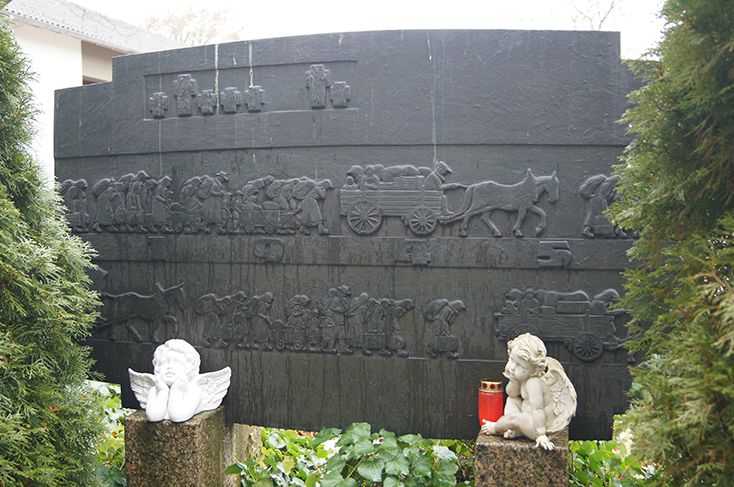
26.11.2021
Museum or Memorial? Twenty years of controversy about the Documentation Centre for Displacement, Expulsion, Reconciliation in Berlin
Interview by Catherine Perron
“The Documentation Centre provides information about the causes, dimensions and consequences of displacement, expulsion and forced migration in twentieth-century Europe and beyond. The main focus is on the displacement and expulsion of Germans at the end of the Second World War, which was initiated by Germany. The Documentation Centre offers exhibitions, a library and a testimony archive, tours and workshops, events, a shop and a restaurant”.(1) The Centre was inaugurated in June 2021 after a twenty-years-long process. Catherine Perron, a specialist in the politics of history and memory related to forced migrations in Germany and in Central and Eastern Europe, answers our questions about the history and politics behind the creation of the Documentation Centre.
Can you tell us about the difficult birth of this resource centre dedicated to the twelve million Germans expelled from Eastern Europe after the Second World War?
The history of the Documentation Centre for Displacement, Expulsion, Reconciliation (Dokumentationszentrum Flucht Vertreibung Versöhnung) was anything but a walk in the park. Angela Merkel remarked at the laying of the first stone in June 2013: “ The path toward opening the Foundation’s documentation centre has indeed involved many difficult steps”. She continued: “I was not always sure that this project would succeed, but it has succeeded”(2).
All in all, it took more than twenty years for the Documentation Centre to come into being: twenty years marked by major controversies and a significant transformation of the original project. Initially supported by a small group, the Federation of Expellees (Bund der Vertriebenen, BdV1(3) ), marked by revanchism, competition between victims, and a tendency to consider German remembrance policy as a zero-sum game, the project finally led to the creation of an institution supported by the German state that endeavours to articulate antagonistic memories and pays great attention to the historical contextualisation of its object. The institution’s troubled trajectory provides numerous examples of the conflicts that can arise around the politics of history in a unified Germany. The struggles over what should be remembered from the past and what forms this remembering should take have exposed the way in which Germans conceive both their identity and their place in a unified Europe.
The genesis of the Documentation Centre, which was opened on 23 June 2021 in Berlin, is part of a unique (geo)political and historical-memorial conjuncture, marked by the ambition to reunify the European continent, and thus Germany; by a memorial turning point—including a desire to revisit the narratives of the Second World War shaped under the Cold War and a need to address the rise in dissenting minority memories; and by the importance of the figure of the victim in the politics of the past. In this context, the trajectory of this museum-memorial project was constantly caught in the tension between, on the one hand, the desire of the expellees’ associations to “fill a memorial void” by recognising “the terrible suffering” of the expelled Germans and the “immense injustice suffered”, as they put it, and, on the other hand, the desire to place this memory in its historical context and to emphasise its European dimension. Moreover, the project was embedded in changing political frameworks over time, from reconciliation with post–Cold War Eastern European neighbours, through European impotence in the face of the wars in the former Yugoslavia and their ethnic cleansing, to the “migration crisis” of 2015.
To return to the history of the Documentation Centre, the idea was launched in 1999 by Erika Steinbach, a member of the conservative fringe of the Christian Democratic Union (CDU) in the Bundestag, who had just been elected head of the Federation of Expellees. At that time, the BdV feared that it would no longer have any influence on (West) German politics, especially since the generation of witnesses was gradually disappearing almost sixty years after the end of the Second World War. Poland and the Czech Republic had just started their negotiations for membership in the European Union, a project strongly supported by the German government, which saw an enlarged Europe as a favourable framework in which to develop peaceful bilateral relations with its neighbours to the east. This reconciliation process, however, threatened the position and even the very existence of the Federation of Expellees, which had experienced a decade of symbolic defeats. Not only had the organisation failed to have any real influence on the bilateral treaties between Germany and its eastern neighbours, but none of its demands had been met: neither the revision of the Oder-Neisse border nor the Heimatrecht (a kind of right of return), nor the restitution of expropriated property to the expellees or compensation for the damage and suffering they experienced during the expulsion.
It was in this context that Erika Steinbach took up a new type of claim. In the field of memory, she called for the creation of a place in Berlin that would be more than a memorial(4) and that would “document the history and suffering of the deportees”. Initially called the “15 million centre” (signifying 15 million expellees), this project was presented as filling a memorial void. Indeed, the representatives of the deportees were concerned that they would be sidelined by the German state’s memory policies.
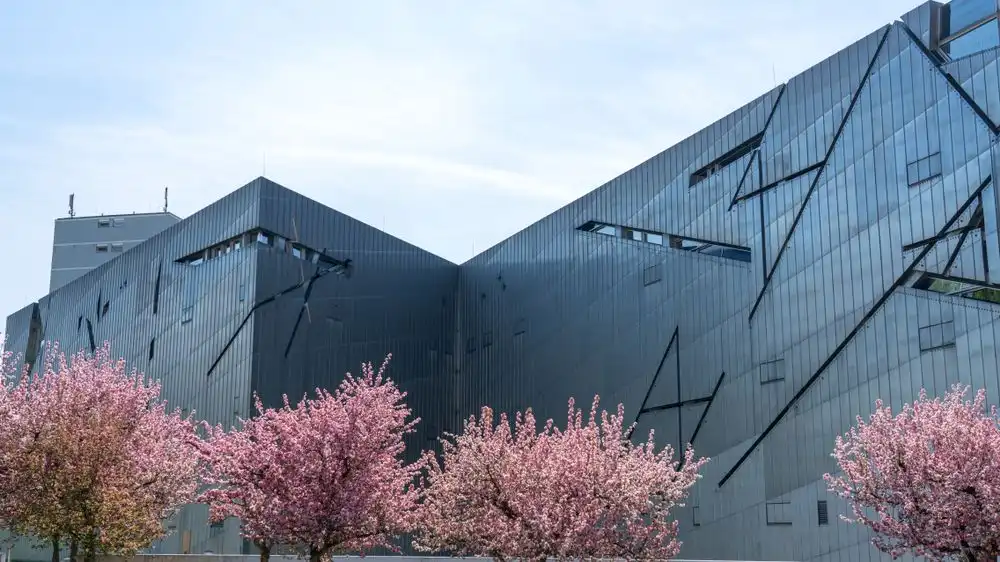
How does this project fit into the memorial landscape of a united Germany?
At the end of the 1990s, a decade that left a strong mark on the German state’s memorial and commemorative landscape came to an end. Erika Steinbach’s initiative coincided with the adoption by the Bundestag on 24 June 1999 of a resolution on the creation of a central Holocaust memorial (Holocaust Mahnmal) dedicated to the Jews of Europe who were murdered, and the presentation by the newly appointed Federal Minister for Culture, Michael Naumann, of a federal concept for memorials ( Gedenkstättenkonzeption). Focusing on the question of the place of the memory of the victims of the East German dictatorship in relation to that of the victims of the National Socialist regime and the establishment of a state system for the patrimonialisation of these pasts, the Gedenkstättenkonzeption was supposed to ensure that each memory had its rightful place. But the memory of the expulsions was not included.
More than fifty years after the end of the war, at a time when the unified German federal state was formalising and institutionalising a culture of remembrance that could be described as negative, placing the crimes committed by the Germans at the heart of its identity, the initiative of the expellees’ associations can be understood as a reaction to the centrality given to the remembrance of the Jewish victims of the war, and as an attempt to impose recognition of the German victims, in a relationship of competition. In any case, the debates that this initiative raised and continue to raise demonstrate the strength of the links between these two memories and the complexity of articulating these two pasts in a unified memorial discourse.
This question of the recognition and weight given to the theme of German suffering linked to the expulsions in relation to that of the suffering of the Jews and the peoples of the countries occupied by the Nazis, in particular in Eastern Europe, has been a source of conflict for many years, provoking numerous resignations and scandals as well as the dismissal, in December 2014, of a the first director of the Foundation. It remains a sore point to this day. A place of remembrance has been integrated into the museum, which proves the institution’s ambition to serve as a memorial. But the representation of the victims’ suffering is tightly controlled: for example, the layout of the new exhibition in the Documentation Centre requires the visitor to pass through the rooms dedicated to the Second World War before being able to access those devoted to the expulsions, a way of materialising the order of historical causality.
In terms of its content, the Documentation Centre had to avoid three pitfalls in the narrative it was going to present, three topoi that had previously permeated the discourse and representations of expellees’ associations. Firstly, it had to avoid proposing a rereading of the history of the Second World War that presented the expellees as the main victims of this conflict and questioned the legitimacy of the European order born of the Potsdam agreements. Secondly—and this follows from the first point—it was important to ensure that attention to German experiences and suffering did not obscure the experiences of people in neighbouring countries, particularly in Eastern Europe. Finally, it was important not to place the expulsions on the same level as genocide—which the repetition of the leitmotiv “never again”, borrowed from the Shoah commemorations, could lead one to fear—but instead to underline the difference in nature between the two phenomena, particularly in terms of the goals they pursued. Erika Steinbach, as well as the weight and influence of the BdV representatives in governing bodies such as the Foundation’s board, constituted another source of conflict.(5)
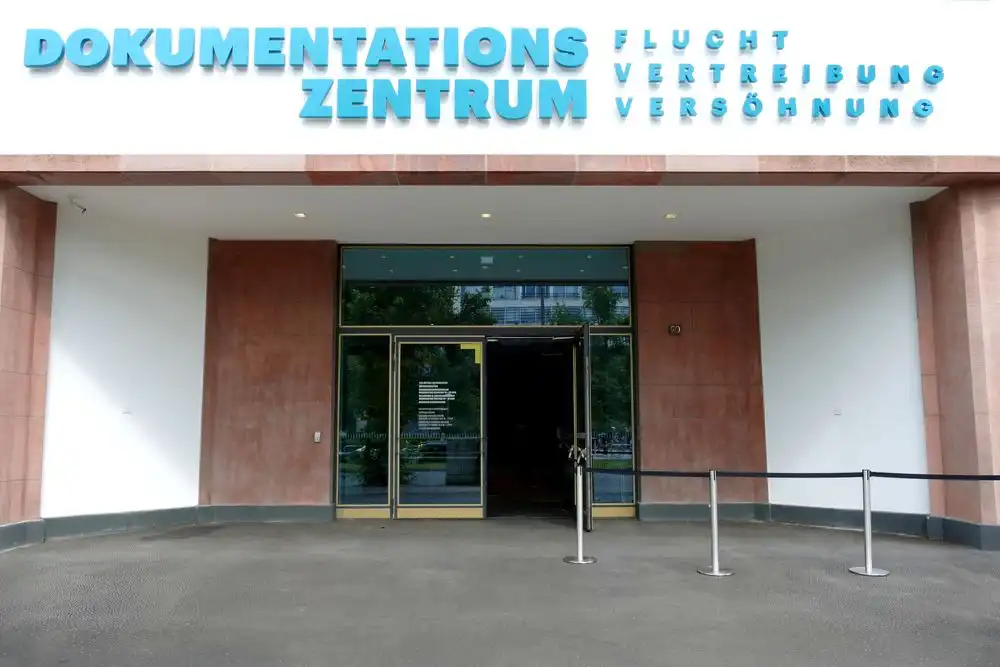
While Gundula Bavendamm,(6) the new director of the Foundation appointed in 2016, succeeded in pacifying the situation and bringing the project to fruition (having a concept for the permanent exhibition adopted in 2017 without making waves), what is striking about the genesis of the Documentation Centre is the persistence of the discourse of the taboo, of silence, or of the memory vacuum that allegedly exists around the expulsions. This topos of the memory void remains very present in the speeches of politicians, as well as in those of representatives of refugee associations and in the media coverage of the inauguration of the Documentation Centre. However, to speak of a memory void or even a taboo in relation to the expulsions of Germans from Eastern Europe is clearly erroneous, and one may wonder about the reasons for the persistence of this discourse.
How do you explain it?
Few German historical events have been remembered as much as the flight and expulsion.(7) The idea of creating a historical museum dedicated to the theme of expulsions is not new. It is part of the desire to make the German past in Eastern Europe part of the national heritage of the federal Republic, which has been evident since the early 1950s. These efforts took various forms, including the creation of historical or ethnographic museums. From the mid-1980s onwards, with the active support of Chancellor Kohl, numerous museum-like institutions dedicated to the large regional areas from which the expellees originated were created or expanded.(8) These institutions are publicly funded by the Federation and the Länder through Section 96 of the Expellees Act of 1953. Although they are not explicitly dedicated to the expulsion, this episode is nevertheless present in all their exhibitions.(9) This raises the question of the contribution of the Documentation Centre to this already well-defined field.
Rather than being a void in the collective memory, this past suffers from being poorly understood by Germans, as shown by the way the expellees were anything but welcomed by the German autochthonous population upon their arrival. The obvious lack of knowledge of Eastern European history in general, and in particular that of the Germans who lived in this region, can certainly be explained by the complexity of this past, by a certain lack of interest in this history after 1945, and also by a mistrust toward a past that was often instrumentalised for the benefit of political projects that led to disaster.
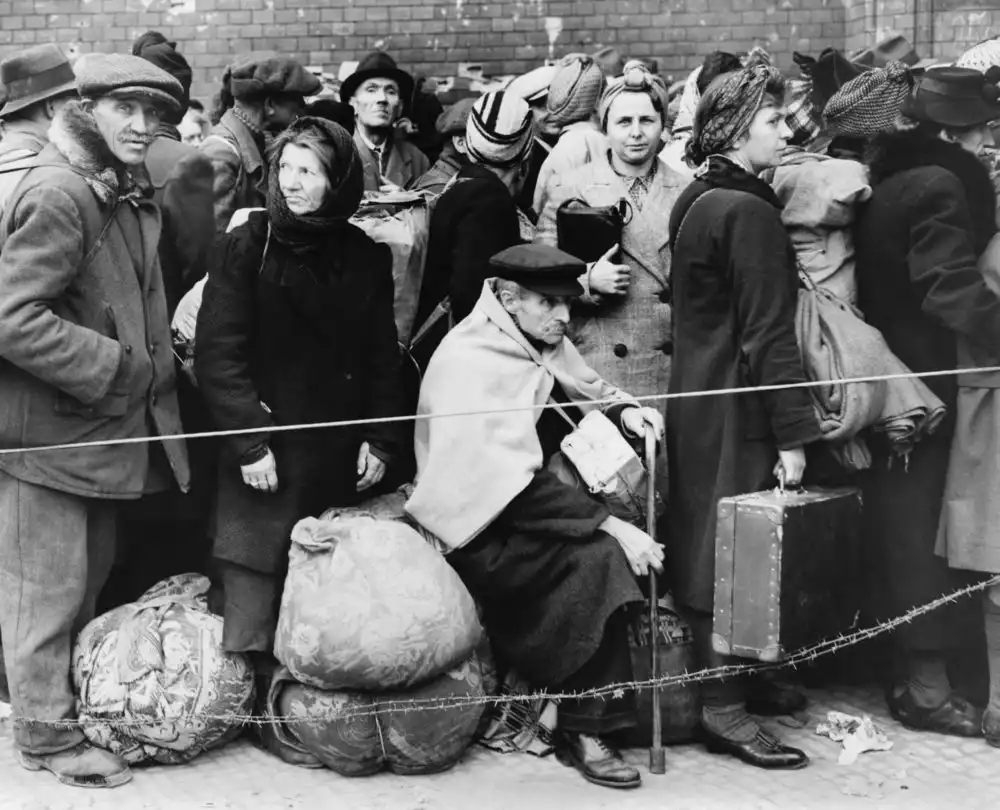
What is the history of the East European Germans? Where did they live? Since when?
These Germans—we can wonder if this term is appropriate here, it would probably be better to talk about German-speaking populations—lived east of the Oder-Neisse line.
Two categories of territories can be distinguished and, therefore, two large and distinct groups among the expellees. On the one hand are German citizens (deutsche Staatsangehörige) who had lived within the borders of the Reich, that is in Eastern Brandenburg, East Prussia, Pomerania, Silesia, and Danzig—territories which, with the exception of Danzig, were part of Germany in 1937. These account for almost two-thirds of the post-war expellees. On the other hand are ethnic Germans ( deutsche Volkszugehörige), that is German-speaking minorities from the Central European countries that emerged from the dismemberment of the Austro-Hungarian Empire, the USSR, and the Baltic States, who accounted for one third of the post-war expellees.
These population groups were far from sharing a common history or even a common origin. Some of them, such as the “Danube Swabians” or the “Sudeten Germans”, who formed powerful expellee associations, were unified after the fact, mainly in order to gain influence in West German politics. Contrary to what their names suggest, neither the Transylvanian Saxons nor the Danube Swabians were of Saxon or Swabian origin, nor did they all come from the Germanic area. These names are late political creations.
The expellees are the descendants of very diverse groups. Their ancestors’ reasons for emigrating to the east, their religious practices, their geographical origins, and their social positions differed. Some were part of the majority ethnic group within their empire, such as the German-speaking populations of the Austro-Hungarian Empire, a dominant position they lost in 1918 when the Central European nation-states were created. Others had always had minority status. Their social positions and influence varied greatly, even within the same country. Take the case of the Russian Empire: the Germans from the Baltic States, who arrived around the twelfth century, were part of the ruling class, while those from Bessarabia were peasants who settled near the Black Sea in the early nineteenth century. These two groups have little in common. The same is true of the Transylvanian Saxons, who also began to migrate since the twelfth century and are Lutheran Protestants, and the Banat Swabians, who are predominantly Catholic and settled in the Pannonian plains from the seventeenth century onwards, although both are German minorities in Romania.
Moreover, the term Vertreibung (expulsion) covers a variety of phenomena, both geographically and historically, which makes it difficult to memorialise and a fortiori to narrate this past in an exhibition. While common sense places the expulsion at the end of the Second World War and attributes responsibility for it to the Eastern European states and the Allies, in fact, under the unifying name of “expellees” ( Vertriebene) we find many different groups: Germans from Bucovina, Volhynia, Bessarabia, Dobrutscha, Bulgaria, Croatia, Serbia, Bosnia, and the Baltic States, victims of the exchange of populations between Nazi Germany, the USSR, and certain countries of South-Eastern Europe,(10) particularly following the signing of the German-Soviet pact in 1939; populations evacuated by the Nazi regime or having fled, for example, from East Prussia, Slovakia, or Romania before the end of the war in the face of the advance of the Red Army; people for example from Silesia, Danzig, East Prussia, Poland, or Czechoslovakia, who were forced to leave their region by violence between the end of the war and the Potsdam Agreements; others, for example from Hungary, who were transferred in a more or less orderly fashion, to use the terms of the Potsdam Agreements, up until the early 1950s; and still others who left their region of origin, mainly Poland, Romania, and the former USSR, between 1950 and the present day, for whom it is difficult to distinguish between the reasons for departure linked to the pressure on German minorities as a result of the National Socialist past and the hope of a better future in the Federal Republic of Germany (FRG).
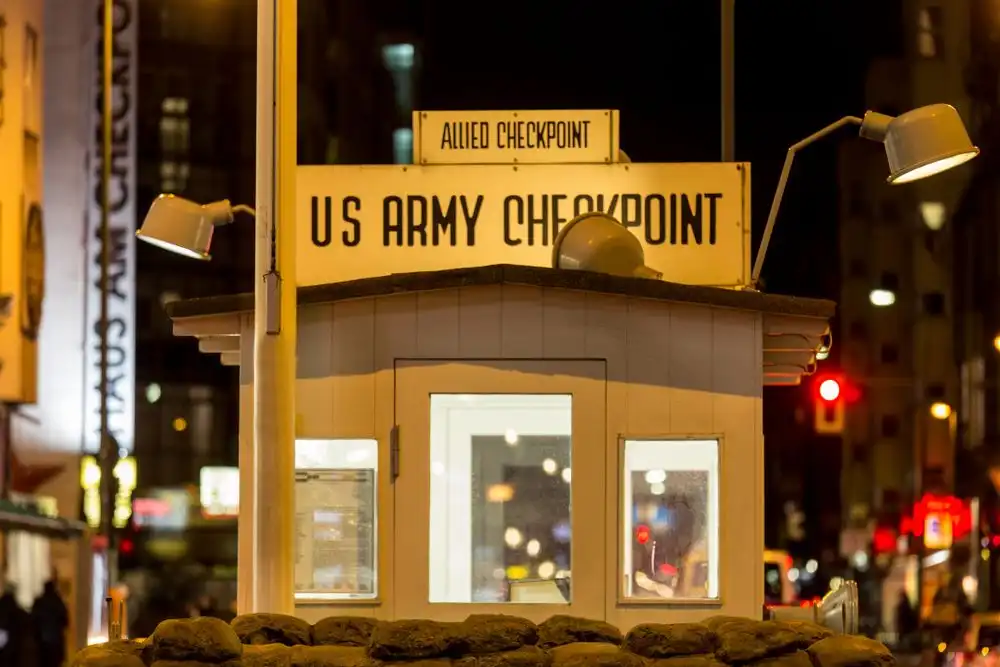
Can you tell us a little about the location of the centre? Why was this place chosen?
Questions related to geography are far from trivial and we know the links between memory and topography. It is therefore hardly surprising that the question of where to locate the centre was one of the most politically controversial issues. What was at stake was nothing less than the future configuration of the German memorial landscape and the perspective given to the commemoration of the expulsions: a German perspective or a European one?
The Federation of Expellees’ decision in 2000 to use the plural when naming their foundation—the Centre against Expulsions—and the declared desire to devote itself to all expulsions, never managed to hide the fact that it was in fact interested in placing the expulsion of Germans, and correspondingly German suffering, at the heart of the memorial project. Indeed, as early as 1999, Erika Steinbach demanded that her memorial museum be located in Berlin, in the reinvested German capital.(11) Alternative proposals were all rejected. One of the most interesting came from the German Social Democrat MP Markus Meckel, together with Polish journalists Adam Michnik and Adam Krzemiński, who in 2002 proposed building the centre in Wrocław (formerly Breslau) in Poland. This location would have given the centre the claimed transnational dimension, because this city, German for several centuries, whose population was expelled at the very end of the war and which was repopulated by Poles who were themselves forced to leave the Kresy (lost territories in the East), is emblematic of the phenomenon of population displacements related to the Second World War. However, for the Federation of Expellees it was unthinkable to locate this centre anywhere else than in Berlin.
In 2008, when the project was taken in hand by the German government and the Flight, Expulsion, Reconciliation Foundation was created, the Deutschlandhaus was chosen to house the museum. This was a way of acknowledging, without saying so, that the project was first and foremost centred on the German experience of expulsion and of including the memory of these German victims in the memorial and commemorative landscape that had previously been exclusively devoted to the victims of the Germans, and thus of reorganising this landscape.
The building has several special features, related to both its former use and its location in the capital. The Documentation Centre is located in an area that houses the central memorial institutions of the united Federal Republic. In addition to its proximity to the former Berlin wall, it faces the ruins of the entrance gate to the Anhalter Bahnhof, from which Berlin’s Jews were deported. It is almost adjacent to the memorial site Topography of Terror, where the headquarters of the Gestapo, the SS, and the Central Office for the Security of the Reich were located during the Third Reich, and it is only a short distance from the Memorial to the Murdered Jews of Europe and the Jewish Museum. Symbolically, the German victims are now placed alongside the victims of the Germans.
The story does not end there, and the Germans are still looking for the right way to commemorate the National Socialist past or to shed light on all aspects of it. Two projects are in the pipeline that could change the spatial and memorial viewpoints on the themes of the Documentation Centre. First, a museum of exile, dedicated to all those who had to flee under National Socialism but also to exile in general, is to open opposite, around the ruin of the Anhalter Bahnhof. Under the patronage of the Nobel Prize winner for literature Herta Müller (herself a German from Romania), it is likely to enrich the vision of what it means to be forced to leave one’s homeland. In addition, a memorial to the East European victims of the Second World War and the occupation of Poland, which was approved in principle by the Bundestag on 15 September 2021, could also find its place here, with Askani Platz, opposite the Documentation Centre, offering another view of the world conflict. I am curious about the type of cooperation that will take place between these different institutions.
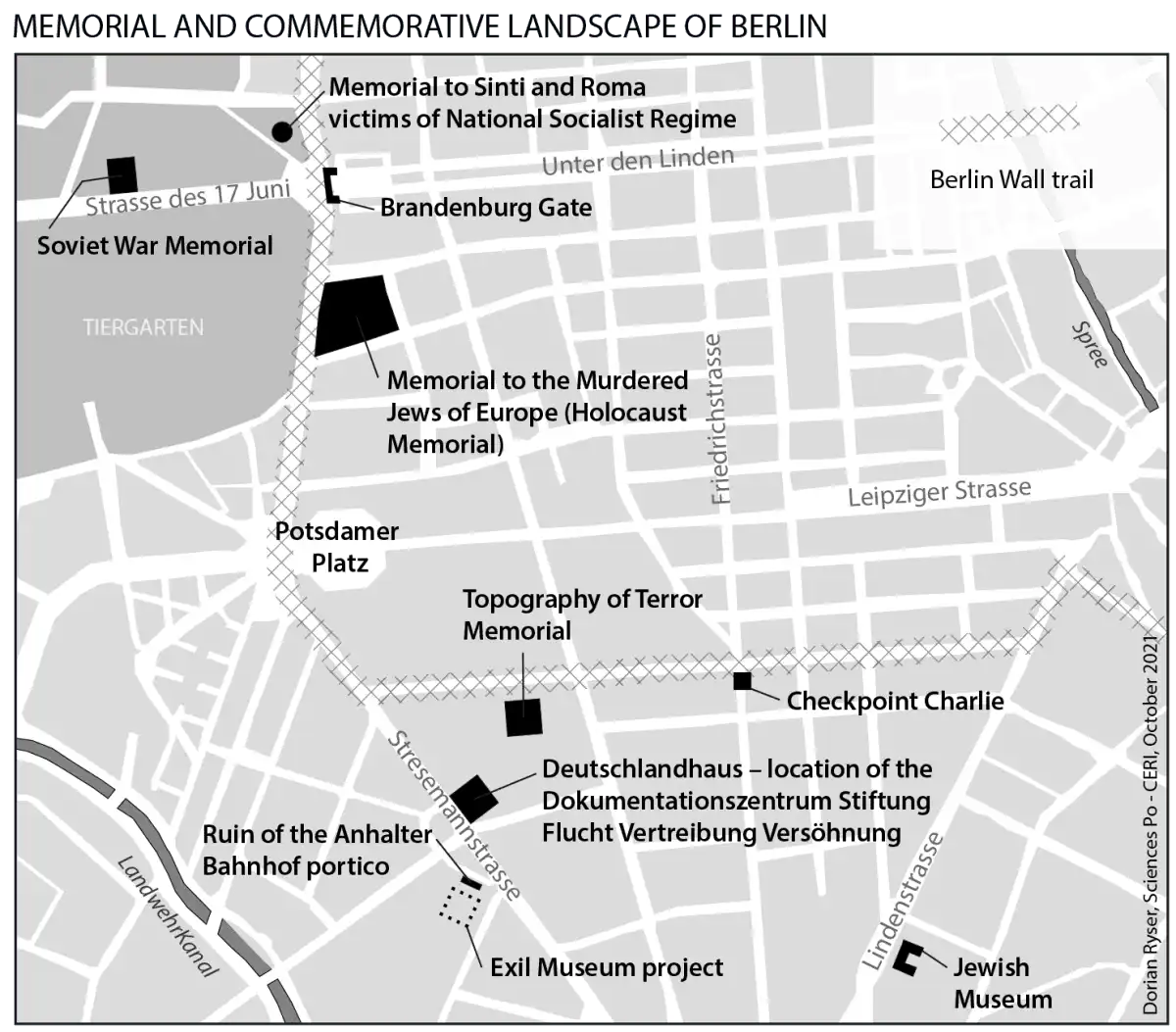
At the opening ceremony of the Documentation Centrer Flight, Expulsion, Reconciliation on 21 June 2021 in Berlin, Angela Merkel stressed: “Without the terror that Germany brought to Europe and the world under National Socialism, without the civilisational rupture of the Shoah committed by Germany under National Socialism and without the Second World War started by Germany, millions of Germans would not have been forced to flee, to undergo displacement and forced resettlement. It is of crucial importance that the history of the deportation of Germans is placed in its historical context”. The Chancellor added: “It is the duty of society as a whole to maintain a living policy of remembrance, especially for the younger generation, who will no longer have the privilege of speaking with those who witnessed the events directly. Furthermore, we are also living in a time when "the number of displaced people around the world is higher than ever”. What role did Angela Merkel play in the creation of the Documentation Centre?
The creation of the Documentation Centre was certainly not a central concern for Angela Merkel, nor was memory policy one of the outgoing Chancellor’s favourite domains. However, this project will have accompanied her sixteen years in the Chancellery, her Kanzlerschaft. She inherited it after the Christian Democratic Union (CDU) took up the demand for the creation of a centre during the 2005 election campaign, and she worked to ensure that the coalition contract with the Social Democratic Party (SPD) contained a commitment to create a “visible sign” commemorating the expulsions in the city of Berlin.
Support for Erika Steinbach’s project was initially based on electoral calculations. In 2005—a year in which the federal elections promised to be very competitive—the expellees represented about 3% of the voters, a figure that could make a difference. Subsequently, it seems to me that Angela Merkel’s actions should be understood more as an attempt to limit the damage caused by the BdV’s claims and attitudes (especially in bilateral relations with neighbouring Poland) than as a genuine commitment to the claims of the expellees. Moreover, the outgoing Chancellor and former Federal President Joachim Gauck have constantly endeavoured to place this memory in a wider context: in particular, that of the migration movements that have affected the FRG.(12) This is particularly interesting when one considers how hard the Federation of Expellees has tried in the past to draw a distinction between expellees and migrants, with Erika Steinbach emphasising that expulsions were “a serious violation of human rights”, whereas migration was something “completely deliberate”.
Angela Merkel’s speech at the opening of the Center was intended as a response to the ambivalence of the museum: it should be a visible sign recalling the suffering of the deported Germans, without changing the meaning of the history of the Second World War and without making these 11.5 million people the main victims of it. In fact, Angela Merkel is repeating almost word for word Article 16 of the 2008 law, which establishes (and provides a framework for) the Foundation Flight, Expulsion, Reconciliation. It states that "the purpose of the foundation (...) is to keep alive, in a spirit of reconciliation, the commemoration and remembrance of flight and expulsion in the 20th century, in the historical context of the Second World War and the National Socialist policy of expansion and extermination, as well as their consequences.
Finally, beyond the commitment of the outgoing chancellor in favour of this project, it seems to me that what should hold our attention here is that it is indeed politics who is stating history, by fixing by law a restrictive framework of interpretation for the historical phenomenon of the expulsion of the German population from Eastern Europe and by deciding on the place of this event in the chain of historical causality. While this obligation may at first sight seem reassuring in that it consolidates the German culture of memory, we are nevertheless entitled to ask ourselves whether it does not prove right the historians who, as early as the end of the 1990s, warned of the state control of the production of historical meaning. Like Norbert Frei, these historians wondered whether such a normative and state-controlled conception of history was not a step backwards from the more critical conception, rooted in the societal debate that had prevailed until then in West Germany.(13)
The career of Erika Steinbach, originally a member of the Christian Democratic Union, who became close to the Alliance for Germany (AfD), confirms the fears of her opponents about her proximity to far-right nationalism. What is the relationship between Erika Steinbach and Angela Merkel?
Indeed, Erika Steinbach, who left the CDU in January 2017, now supports the AfD without being a member. Moreover, since March 2018, she has been chairing the Desiderius Erasmus Foundation, which is close to the AfD (similar to the Konrad Adenauer Foundation for the CDU or the Friedrich Ebert Foundation for the SPD), which she wants to be financed by public subsidies since the AfD has obtained elected representatives in the federal elections of 26 September 2021. These positions led to her not being invited to the inauguration of the Documentation Centre, which she largely contributed to creating (even if things were not officially formulated as such).
The final break in the relationship between Erika Steinbach and Angela Merkel occurred during the refugee crisis. The relationship between these two women, who represent opposing currents within the CDU, was not always stormy, on the contrary. The former, with her project for a Centre against Expulsions (Zentrum gegen Vetreibungen), has often served as a conservative guarantor for the latter, who in return has helped the project to progress. Steinbach’s vehement stance against the outgoing chancellor’s policies and her racist tweets during the refugee crisis, however, eventually marginalised her within her own party. Even more serious was her social media campaign against Kassel district president Walter Lübke, which, according to many was a factor in his murder by the far right on 2 June 2019.(14)
Erika Steinbach has always defended positions very much to the right of the CDU, and although she can be credited with having succeeded in modernising the image of the BdV, she has always been distinguished by the pugnacity of her speeches which left little room for compromise. For Germany’s Eastern European partners, and in particular for the Poles, the fact that she was one of the thirteen CDU MPs who voted against the recognition of the Oder-Neisse border in the Bundestag in 1991 and that she passed herself off as a victim of deportations, even though her parents had settled in Poland in the wake of the Nazi occupation, made her permanently unacceptable in the eyes of the German public, made her role as a bridge-builder between peoples, a role she tried to take on in the early 2000s when she launched the BdV’s Centre against Expulsions, definitely unacceptable. This did not however prevent Steinbach's most bitter opponents, namely the neo-conservative elites in Eastern Europe and Poland, from using similar means to establish and strengthen their power: namely, using history for political purposes.
Interview by Corinne Deloy
Cover image: Der unvergessenen Heimat und ihren Toten monument, located at the entry of the Burghalden cemetary, Sindelfingen, Germany, 2017. © Catherine Perron
Cite this article : "Museum of Memorial? Twenty years of controversy about the Documentation Centre for Displacement, Expulsion, Reconciliation in Berlin. Interview with Catherine Perron", Les Analyses du CERI, 26 November 2021.
Notes
- 1.Description of the Centre available on its website. See https://www.flucht-vertreibung-versoehnung.de/visitor-info-en
- 2.Rede von Bundeskanzlerin Merkel bei Baubeginn eines Dokumentationszentrums der Stiftung Flucht, Vertreibung, Versöhnung im Deutschlandhaus, Berlin, 11 June 2013. Here Angela Merkel refers to the Foundation Flight, Expulsion, Reconciliation https://archiv.bundesregierung.de/archiv-de/dokumente/rede-von-bundeskanzlerin-merkel-bei-baubeginn-eines-dokumentationszentrums-der-stiftung-flucht-vertreibung-versoehnung-im-deutschlandhaus-471058 (accessed on 25 November 2021).
- 3.This federation brings together all expellee associations, organised by territory of origin, such as the Sudetendeutsche Landsmannschaft, the Landsmannschaft Schlesien - Nieder - und Oberschlesien, the Landsmannschaft Ostpreußen, etc. It was founded in 1957 in West Germany. There was no similar organisation in the GDR where the topic of the expulsion was taboo.
- 4.Indeed, there is already a memorial to the expulsion in Berlin. It was erected in 1955 at the request of the expellees’ associations at Theodor Heuss Platz in the western part of the city. It is a cube made of natural stone topped by an iron sacrificial cup in which an eternal flame burns. On one side of the cube a bronze plaque bears the inscription: Diese Flamme mahnt - Nie wieder Vertreibung (This flame is a reminder: Expulsions, Never again!).
- 5.On these issues, see my previous paper "Histoires de réfugiés. La Fondation Fuite expulsion réconciliation à la croisée des chemins"
- 6.Gundula Bavendamm, a historian who had previously been director of the Allied Museum in Berlin, took up her post at the beginning of 2016 after the institution had gone through a major crisis. On the one hand, the director of the Foundation Flight, expulsion, reconciliation was suspended in December 2014, and on the other hand, one third of the members of the Scientific Council, including the last Polish members—not only scientific but also moral guarantors of the project—resigned at the beginning of 2015, when the director’s successor was appointed, but did not take up the position. Gundula Bavendamm was appointed director after a one-year vacancy. She managed to ease the tension and get the project back on track.
- 7.See Ewa Hahn and Hans Henning Hahn, “L’exode et l’expulsion”, in Mémoires allemandes, edited by Hagen Schulze and Etienne François, 607-630, Paris: Gallimard, 2007.
- 8.Oberschlesisches Landesmuseum in Ratingen, Haus Schlesien Museum in Königswinter, Ostpreußisches Landesmuseum in Lüneburg, Westpreußisches Landesmuseum in Münster-Wolbeck, and Siebenbürgisch-Sächsisches Museum in Gundelsheim. Later, the Donauschwäbisches Zentralmuseum in Ulm, the Schlesisches Museum in Görlitz, the Pommersches Landesmuseum in Greifswald, and the most recent, the Sudetendeutsches Museum in Munich. It would be interesting to observe future cooperations, if any, between these different institutions and the way all these institutions will articulate their contents.
- 9.On this issue, see Catherine Perron, “Les efforts de patrimonialisation du passé oriental de la nation au prisme des musées ‘est-allemands’”, Revue d’Allemagne et des pays de langue allemande 47, no. 2, December 2015, 401‑422. See also Catherine Perron, “Un paysage mémoriel éclaté. La mémoire de la fuite et de l’expulsion au miroir des musées” in Fuite et expulsions des Allemands. Transnationalité et représentations 19e-21e siècle , edited by Carola Hähnel-Mesnard and Dominique Herbet, 129-144, Villeneuve d’Ascq, Presses universitaires du Septentrion.
- 10.During the so-called Heim ins Reich Aktion (return to the Reich)—between 1939 and 1942—Nazi Germany transferred many German minorities (especially those living in the territories, which under the German-Soviet Pact were assigned to the USSR) within the borders of the Reich.
- 11.Between 1949 and 1990, the provisional capital of the FRG was Bonn. Although it was transferred to Berlin by the 1990 Unification Treaty, the relocation of the parliament and government was voted by parliament in 1991 and became a reality in 1999.
- 12.The date chosen by the government as the federal day of commemoration for victims of flight and deportation—namely 20 June—coincides with World Refugee Day. On this, see Catherine Perron, “Reimagining German Identity through the Politics of History: Changing Interpretations of German Past Migrations during the ‘Refugee crisis’, 2015/2016”, Journal of Ethnic and Migration Studies 47, no. 18, October 2020, 1‑17.
- 13.Norbert Frei, in his essay 1945 und wir published in 2005 with C.H. Beck in Munich, 19.
- 14.After weeks of harassment on social networks, Walter Lübke, President of the North Hessian district, who defended Angela Merkel’s refugee policy, was murdered by a neo-Nazi with two bullets to the head on 2 June 2019. This fatal attack is the first organised by the far right against a political figure in democratic Germany.
(credits: Catherine Perron)
Follow us
Contact us
Media Contact
Coralie Meyer
Phone : +33 (0)1 58 71 70 85
coralie.meyer@sciencespo.fr
Corinne Deloy
Phone : +33 (0)1 58 71 70 68
corinne.deloy@sciencespo.fr
